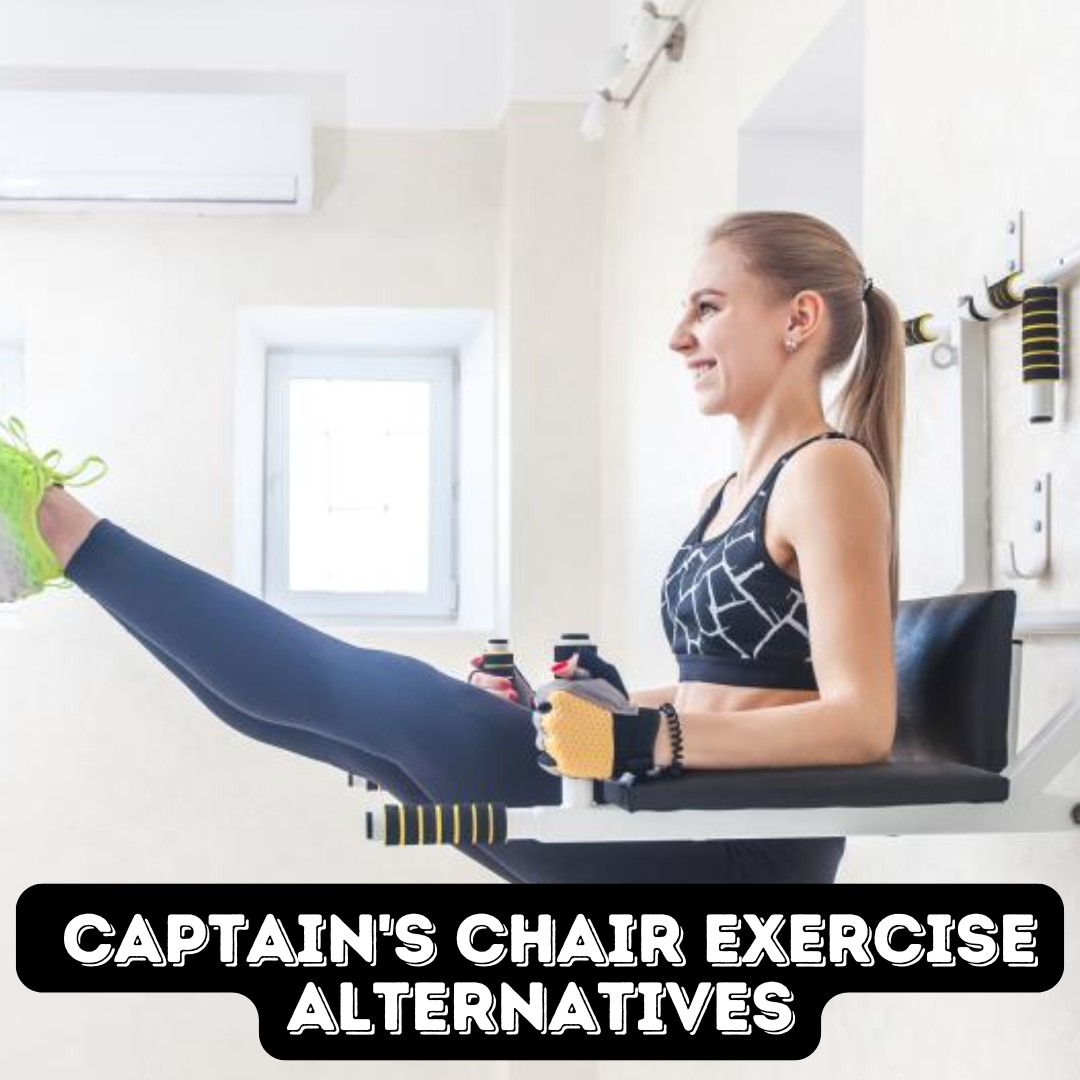
Top 9 Captain’s Chair Exercise Alternatives: Achieve a Stronger Core
The captain’s chair exercise is a popular choice for targeting the abdominal muscles and improving core strength. It involves using a captain’s chair machine to perform leg raises or knee raises while supporting your back and arms. However, if you’re looking for variety in your core workout routine or don’t have access to a captain’s chair, there are plenty of effective alternatives you can incorporate.
In this comprehensive guide, we’ll explore the top 9 captain’s chair exercise alternatives that can help you build a stronger core. We’ll cover the benefits of each exercise, how to perform them correctly, and provide a sample workout plan. Additionally, we’ll answer frequently asked questions to help you get the most out of your core training.
Why Consider Captain’s Chair Alternatives?
While the captain’s chair is an effective tool for core training, incorporating alternative exercises can offer several benefits:
- Variety: Prevent workout monotony and target your muscles from different angles.
- Accessibility: Some alternatives don’t require specialized equipment.
- Adaptability: Different exercises can be modified to fit various fitness levels and goals.
Top 9 Captain’s Chair Exercise Alternatives
Here are nine excellent alternatives to the captain’s chair exercise, each offering unique benefits for core strength:
1. Hanging Leg Raises
How to Perform:
- Hang from a pull-up bar with an overhand grip and arms fully extended.
- Keep your legs straight and raise them until they are parallel to the ground.
- Lower them back down with control.
Benefits:
- Targets the lower abs and hip flexors.
- Enhances grip strength and shoulder stability.
2. Plank
How to Perform:
- Start in a forearm plank position with your elbows under your shoulders and your body in a straight line.
- Engage your core and hold this position for the desired time.
Benefits:
- Strengthens the entire core, including the transverse abdominis and obliques.
- Improves overall stability and endurance.
3. Bicycle Crunches
How to Perform:
- Lie on your back with your hands behind your head and legs lifted in a tabletop position.
- Bring your right elbow towards your left knee while extending your right leg.
- Alternate sides in a pedaling motion.
Benefits:
- Engages the upper and lower abs as well as the obliques.
- Provides a dynamic, full-range core workout.
4. Reverse Crunches
How to Perform:
- Lie on your back with your hands by your sides and legs bent at 90 degrees.
- Use your core to lift your hips off the ground and towards your chest.
- Lower your hips back down slowly.
Benefits:
- Focuses on the lower abs.
- Helps improve pelvic stability and control.
5. Mountain Climbers
How to Perform:
- Start in a high plank position with your hands under your shoulders.
- Bring your right knee towards your chest, then quickly switch to bring your left knee forward.
- Continue alternating legs in a running motion.
Benefits:
- Engages the entire core while providing a cardiovascular workout.
- Enhances coordination and agility.
6. Russian Twists
How to Perform:
- Sit on the ground with your knees bent and feet lifted slightly off the floor.
- Lean back slightly and hold a weight or medicine ball with both hands.
- Rotate your torso to the right, then to the left, while keeping your core engaged.
Benefits:
- Targets the obliques and improves rotational core strength.
- Can be modified to increase or decrease difficulty.
7. Flutter Kicks
How to Perform:
- Lie on your back with your hands under your hips for support.
- Lift your legs slightly off the ground and alternate kicking them up and down in a fluttering motion.
Benefits:
- Strengthens the lower abs and hip flexors.
- Improves endurance and stability.
8. Toe Touches
How to Perform:
- Lie on your back with your legs extended towards the ceiling and arms reaching towards your toes.
- Lift your upper body off the ground and try to touch your toes.
- Lower back down slowly.
Benefits:
- Engages the upper abs and improves flexibility.
- Enhances core control and balance.
9. V-Ups
How to Perform:
- Lie on your back with your arms extended overhead and legs straight.
- Simultaneously lift your upper body and legs to form a V shape.
- Lower back down with control.
Benefits:
- Provides a challenging full-core workout.
- Improves strength and coordination.
Sample Core Workout Plan
Here’s a sample workout plan incorporating these alternatives to the captain’s chair exercise. Perform this routine 2-3 times per week for optimal results.
Warm-Up (5-10 minutes)
- Jumping jacks
- High knees
- Dynamic stretches (e.g., leg swings, arm circles)
Workout Routine
- Hanging Leg Raises: 3 sets of 10-12 reps
- Plank: 3 sets of 30-60 seconds
- Bicycle Crunches: 3 sets of 15-20 reps per side
- Reverse Crunches: 3 sets of 12-15 reps
- Mountain Climbers: 3 sets of 30-45 seconds
- Russian Twists: 3 sets of 15-20 reps per side
- Flutter Kicks: 3 sets of 30-45 seconds
- Toe Touches: 3 sets of 12-15 reps
- V-Ups: 3 sets of 10-12 reps
Cool-Down (5-10 minutes)
- Static stretching (focus on the abs, lower back, and hips)
- Deep breathing exercises
Frequently Asked Questions
Q1: Can I perform these exercises if I have lower back pain?
A1: If you have lower back pain, it’s crucial to consult with a healthcare professional before starting any new exercise routine. Some exercises, like the plank and reverse crunches, may be modified to reduce strain on the lower back.
Q2: How often should I include these core exercises in my workout routine?
A2: For optimal core strength, include these exercises 2-3 times per week. Ensure you allow for adequate rest and recovery between sessions.
Q3: Are these exercises suitable for beginners?
A3: Yes, many of these exercises can be adapted for beginners. Start with modified versions or lower reps and gradually increase intensity as your core strength improves.
Q4: How can I make these exercises more challenging?
A4: To increase the difficulty, you can add weights, increase the duration of each exercise, or incorporate advanced variations (e.g., weighted Russian twists or hanging leg raises with a twist).
Q5: Can I combine these exercises with other types of workouts?
A5: Absolutely! Combining these core exercises with strength training, cardio, and flexibility workouts can help create a well-rounded fitness routine.
Q6: How long should I rest between sets?
A6: Rest for 30-60 seconds between sets to allow your muscles to recover. Adjust the rest period based on your fitness level and goals.
Q7: Are these exercises effective for improving overall core strength?
A7: Yes, these exercises target various aspects of core strength, including the upper abs, lower abs, and obliques, making them effective for overall core development.
Q8: Can these exercises help with sports performance?
A8: Strong core muscles are essential for athletic performance, improving stability, balance, and power. Incorporating these exercises can enhance your performance in sports that require core strength and coordination.
Conclusion
Incorporating alternative exercises to the captain’s chair can add variety to your core workout routine while effectively targeting different muscle groups. By including exercises like hanging leg raises, planks, and bicycle crunches, you can build a stronger, more resilient core that supports overall fitness and performance. Adjust the exercises to fit your fitness level and goals, and remember to maintain proper form for optimal results.
With dedication and consistency, these captain’s chair alternatives can help you achieve a robust core and enhance your overall strength and stability.

Leave a Reply